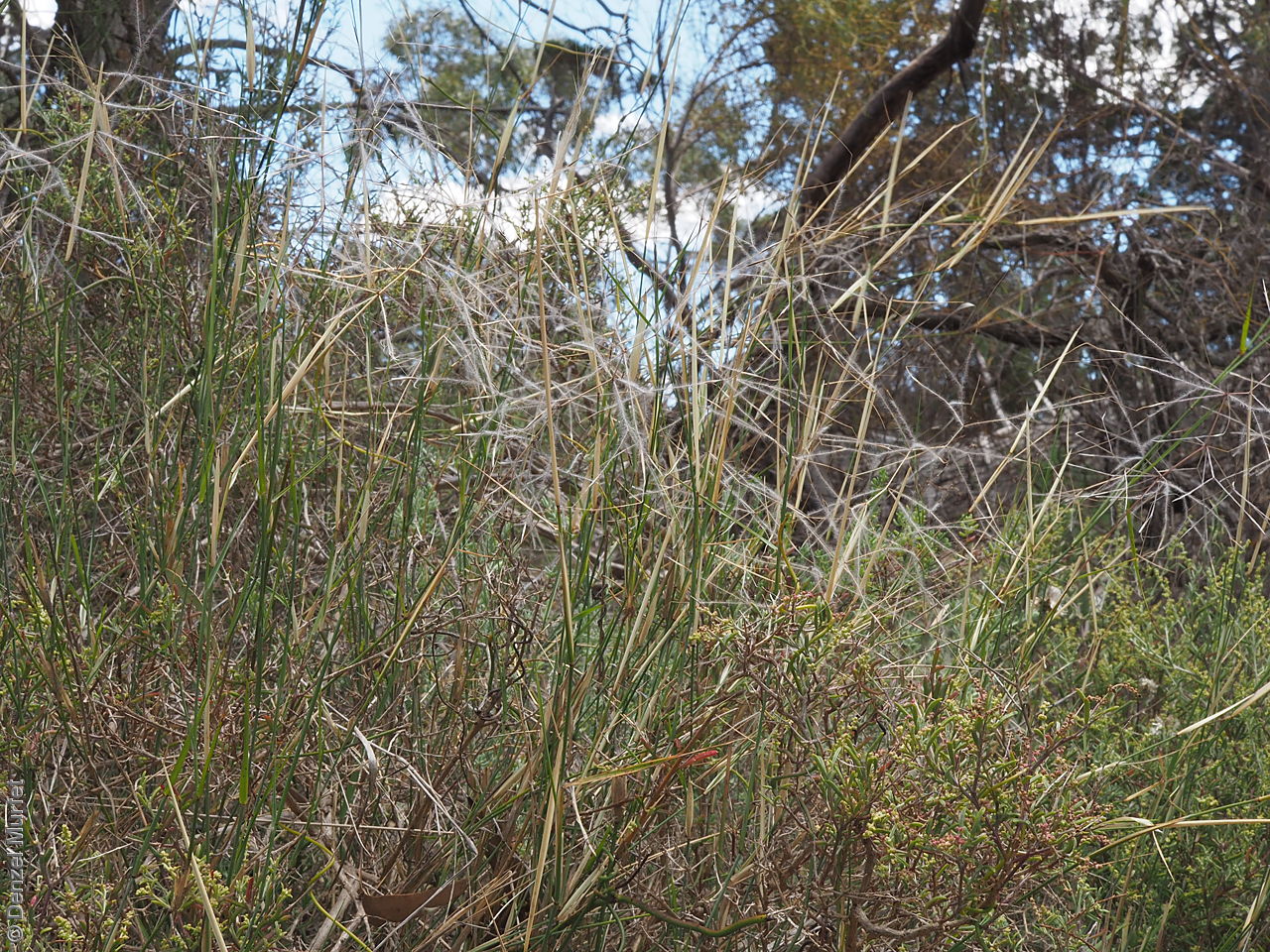















Botanical art
Prior names
Stipa elegantissima
Common names
Elegant Spear-grass
Feather Spear-grass
Etymology
Austrostipa from the Latin 'auster' meaning south and the genus Stipa, referring to the genus being allied to Stipa but restricted to Australia. Elegantissima from the Latin 'elegans' meaning elegant and suffix 'issima' meaning very, alluding to its attractive feathery inflorescence.
Distribution and status
Found in the southern part of South Australia, south of the Gammon Ranges growing in wide range of habitats, including mallee open forest and woodland and shrubland on calcareous sand, clay, loam and ironstone. Also found in Western Australia, New South Wales and Victoria. Native. Common in South Australia. Common in the other states.
Herbarium regions: Nullarbor, Gairdner-Torrens, Flinders Ranges, Eastern, Eyre Peninsula, Northern Lofty, Murray, Yorke Peninsula, Southern Lofty, Kangaroo Island, South Eastern, Green Adelaide
NRM regions: Adelaide and Mount Lofty Ranges, Alinytjara Wilurara, Eyre Peninsula, Kangaroo Island, Northern and Yorke, South Australian Arid Lands, South Australian Murray-Darling Basin, South East
AVH map: SA distribution map (external link)
Plant description
Decumbent perennial grass to 2 m high with a short rhizome; culms branching from the base and nodes glabrous. Leaves glabrous with blade flat or inrolled, to 12 cm long and 4 mm wide. Inflorescence a widely spreading, pyramidal panicle to 25 cm long; panicle branches plumose with spreading silky hairs to 3 mm long and purplish glumes to 13 mm long, with hairs along the nerves. Flowering between August and December.
Key to this species: perennial grass; culm branching from the base; panicle large, spreading with branches plumose with hairs 2-3 mm long; nodes glabrous; glumes with hairs on nerves; lemma hairless except near the callus. Fruits are dark-brown linear-lanceolate lemma to 9 mm long, with a fine dense papillose surface and covered in short white hairs about the callus, otherwise glabrous; coma absent or very sparse; callus short to 1 mm long; awn once or twice bent to 50 mm long; shortly pubescent; palea glabrous and up to about one-half as long as lemma and thinly membranous. Seeds are yellow-brown narrow-ovoid grain to 5 mm long within the lemma. Seed embryo type is lateral.
Seed collection and propagation
Collect seeds between October and February. Use your hands to gently strip the seeds (lemma) off the mature fruiting spike, those that are turning brown. Mature seeds will come off easily compare to the immature seeds that remain on the spike. Alternatively, you can break off the whole fruit spike to allow some of the seeds to mature further. Place the seeds/spike in a tray and leave to dry for two weeks. No further cleaning is required if only seed collected. If seed spikes collected, use hand to strip off the mature seeds. Store the seeds with a desiccant such as dried silica beads or dry rice, in an air tight container in a cool and dry place. Viability of grass seeds could be very viable, depending on time of seed collections and seasonal conditions.
| Location | No. of seeds (weight grams) | Number of plants | Date collected | Collection number Collection location | Date stored | % Viability | Storage temperature |
|---|---|---|---|---|---|---|---|
| BGA MSB | 6,400 (19.4 g) 6,400 (19.4 g) | 300+ | 20-Dec-2005 | KHB21 Southern Lofty | 9-Aug-2006 | 35% | -18°C |
Number of plants: This is the number of plants from which the seeds were collected.
Collection location: The Herbarium of South Australia's region name.
% Viability: Percentage of filled healthy seeds determined by a cut test or x-ray.